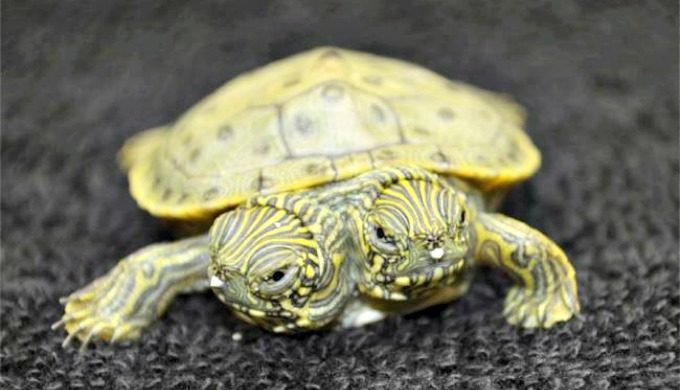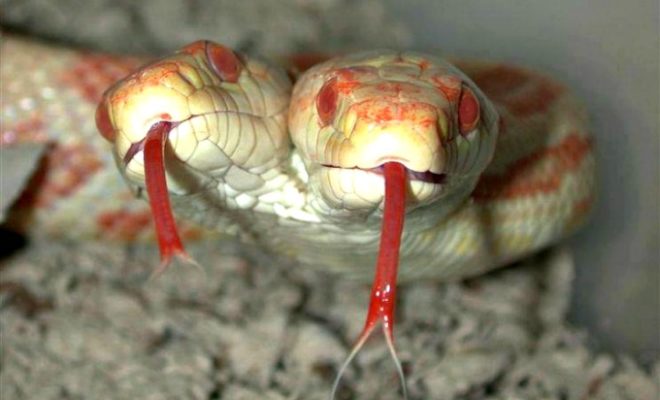Last month, a woman in Virginia found a two-headed copperhead snake in her neighbor’s flowerbed, prompting widespread shock, not to mention, recoil around the country. The venomous young snake (estimated to be about two weeks old and six inches in length) lived to tell about its run-in with the scary one-headed lady, and is now living with an experienced viper handler in Virginia. Many argued that perhaps the Virginia two-headed copperhead was a fake, but officials assured the public that the snake is very much real and that the phenomenon of two-headed snakes isn’t as rare as you might think.
Nature
Two-Headed Snakes: Double The Danger or Twice As Fascinating?
How Long Can A Two-Headed Snake Survive?

Photo: Facebook/Onlineindusnews
Herpetologists say that most two-headed snakes don’t survive long in the wild. In two-headed (or polycephalic) creatures, each of the two heads typically have a brain (in venomous snakes, each head has fangs and venom), and these brains often cause the snake to fight with itself–leading one head to attack the other–usually resulting in death. Having two heads also makes it more difficult for a snake to find prey and to eat the prey quickly enough to avoid becoming a meal for another predator. The recently discovered two-headed copperhead stands a much better shot at survival in captivity. In fact, a two-headed king snake lived for 17 years in a lab at Arizona State University.
Two-Headed Rat Snake in Waco

Photo: Facebook/Amazingphotos
A two-headed rat snake was found in central Texas in 2016. The polycephalic rat snake was discovered when a Waco-area woman’s dog chased it under a porch. The snake was recovered and taken to the Cameron Park Zoo in Waco, where the snake was cared for. (There’s no word on if the snake is still alive and well at the zoo).
According to experts, two-headed snakes are rare, but not completely unheard of. These snakes tend to do reasonably well in captivity, without the hindrance of trying to escape prey and without the burden of capturing their own food. In fact, a two-headed corn snake (aptly named “Thelma and Louise”), who resided at the San Diego Zoo, went on to give birth to 15 normal babies before her death in captivity.
Other Two-Headed Animals Who Call Texas Home

Photo: Facebook/RipleysNY
While snakes are the most common polycephalic animals, there have been reports of two-headed turtles, tortoises, cats, sheep and even goats. In fact, a two-headed baby turtle hatched at the San Antonio Zoo in 2013. The San Antonio Zoo was also home to Janus, a two-headed rat snake who lived at the zoo from 1978 until 1995.
Scientists explain that two-headed animals occur much in the same way that “Siamese Twins” occur, when a developing embryo fails to separate into identical twins. According to National Geographic, “among humans, 75 percent of conjoined twins are stillborn or die within 24 hours.” Experts concur that there are likely many more occurrences of two-headed animals born in the wild but than only a few survive long enough after birth to be discovered.


